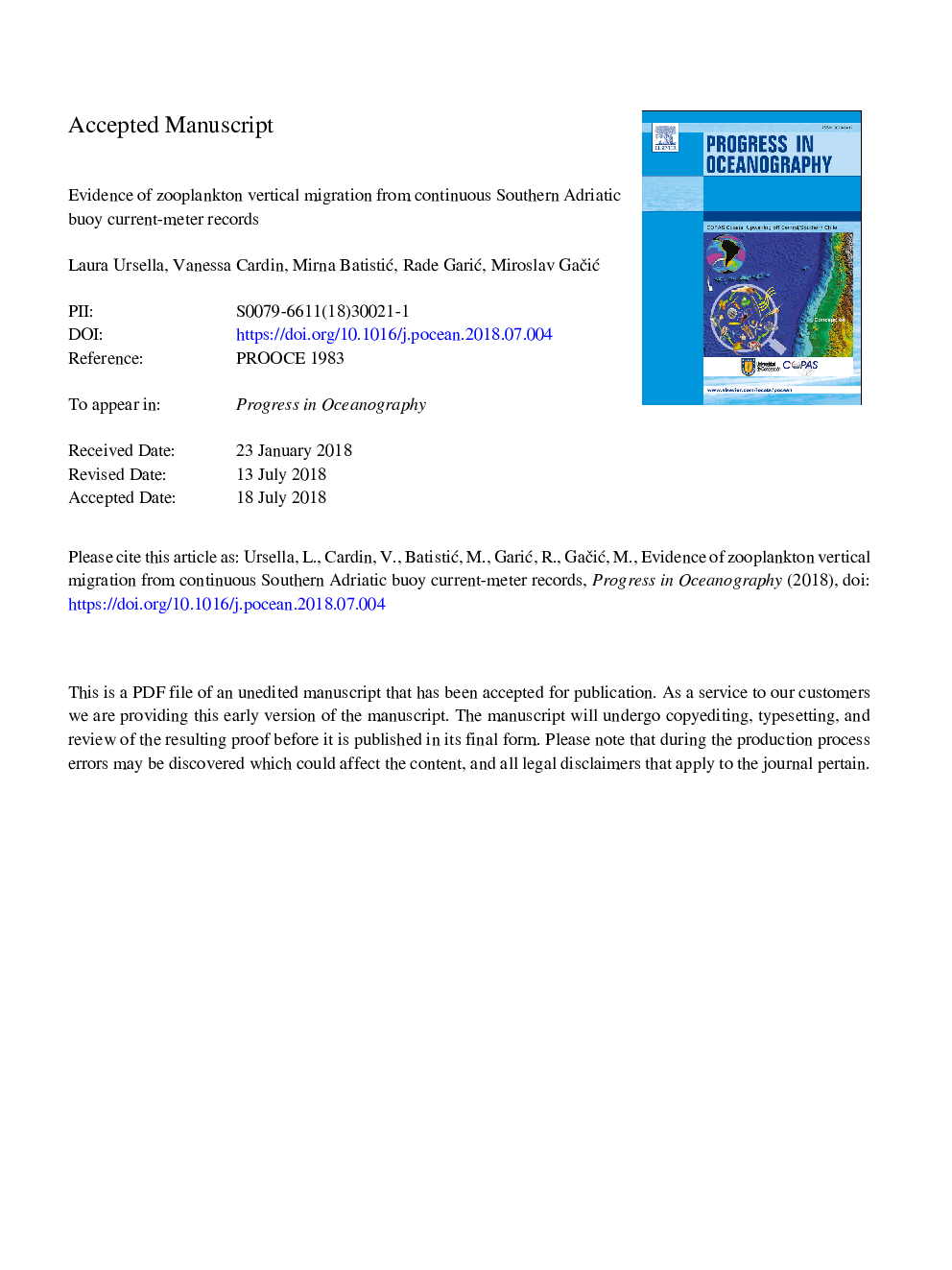| Article ID | Journal | Published Year | Pages | File Type |
|---|---|---|---|---|
| 8886577 | Progress in Oceanography | 2018 | 58 Pages |
Abstract
From the eleven-year data record at the Southern Adriatic Observatory (E2M3A), we study for the first time in the Adriatic Sea the strength of the backscatter signal from an Acoustic Doppler Current Profiler (ADCP) in relation to zooplankton vertical movement. The signal represents well the general behaviour of the zooplankton to sink at dawn and to emerge at the sunset. The modulation of the signal along the year is linked in particular to the different environmental conditions and the presence of different zooplankton groups. The correlation between the backscatter signal and distinct zooplankton groups (copepods, euphausiids, ostracods, appendicularians, salps) shows that in different seasons and environmental conditions, different groups are responsible for the strength of the signal. Furthermore, the backscatter signal, interpreted in terms of the qualitative composition of the zooplankton community, provides important information on the behaviour and habits of zooplankton in the southern Adriatic. Poorly known aspects of zooplankton behaviour are described in more detail, such as: recovery of zooplankton vertical distribution after mixing events, vertical migration in conditions of increased food availability at depth due to vertical mixing, modulation of vertical migration in dependence of the lunar phase and vertical migration in relation to deep chlorophyll maximum position. In addition, the present study emphasizes the possible influence of gelatinous zooplankton at the open sea on high backscatter values during the warmer part of the year.
Related Topics
Physical Sciences and Engineering
Earth and Planetary Sciences
Geology
Authors
Laura Ursella, Vanessa Cardin, Mirna BatistiÄ, Rade GariÄ, Miroslav GaÄiÄ,
